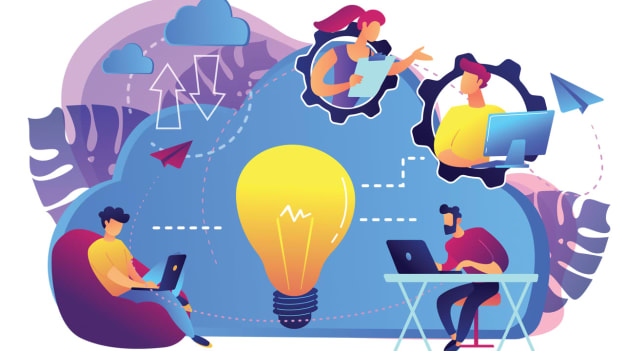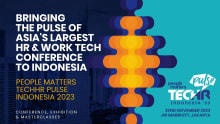HR Metamorphosis – from Consolidated to Connected & Hybrid

Workplaces as we know them have evolved to the next level, and human resource management has a whole new dimension today. With centralised offices giving way to decentralised ones, and a rising hybrid system ‘corporate culture’ has a whole new definition.
COVID-19 has forever impacted the way we work and every organisation across the globe is experimenting with newer ways till such time they arrive at model that works most optimally for them. For HR leaders, this translates into being prepped for many unforeseen challenges that are likely to become catalysts of a redefined HR Agenda on how to make the best of this ‘new normal’.
In the last 18 months or so, people have changed – their perceptions, needs and wants, expectations – everything has evolved drastically. People now see the workplace and their working lives in a completely different light, and there is simply no putting this genie back into the bottle.
While the ways and means of HR delivery have changed around dependence on technology, the ‘Human’ in HR is going back to basics. While automation is playing its part in keeping business continuity going, for HR leaders the hot top priority is managing emotional quotient and employee experience and its delivery across the organisation.
The post-pandemic work culture is a more collaborative and networked way of working, automation is the name of the game as the be-all and end-all of the employee interface is across screens making integrated work systems paramount in ensuring enhanced employee experiences. The other major trend I have witnessed is that brands that have a defined purpose and walk the talk are fast becoming the preferred employer of choice.
Here’s how I’ve witnessed HR functions being redefined to suit the new world order:
Re-imagine Hiring
Hiring has evolved – it is now agnostic of geographic location as screening and interviewing prospective candidates is all being done across screens. While physical interviews may make a comeback sometime in the future, the past year and a half has taught us that we can do without it too. Reliance on traditional methods of recruiting, screening, and vetting tools are no longer entirely relevant. Allowing candidates to interview virtually is in fact a process that is smooth and transparent. HR professionals must work towards adopting new hiring processes – online applications, virtual interviews, using e-signatures for onboarding paperwork and anything else that is needed to move forward and improve efficiencies.
The new age talent is not just about salary and work culture any more - brand and organisation perception have moved and are now driven in the peer-to-peer space or by online reputation-driven engagement. The key drivers of attracting quality talent are gradually shifting to employer brand, diversity, inclusion, as well as employee feedback. Every potential candidate is now scanning numerous websites to find more about what goes inside the organisation. Someone always has someone who knows someone in the organisation where a candidate is being interviewed. In this networked world, it takes less than an hour to get culture-related feedback about any organisation via various social networks.
Secondly, and more importantly, talent is not looking at tenure these days – they are looking at role enrichment, facilitating working environment, and faster rewards and recognition. This is what’s going to be the challenge for HR leaders, in creating an ecosystem that facilitates people to thrive and helps them attract better talent.
Prioritise Training & Development
The past year and a half has forced us to pivot to new ways of thinking, working cohesively despite being physically distant, and making us rely on our colleagues’ support more than ever, making training and skill development crucial and critical to well-being and productivity. Employee engagement via training, skill enhancement programs led by experts, support sessions, and regular check-ins across all levels are all key to ensure the professional development and mental well-being of employees. T&D programmes should focus on development of new skills, as well as helping identify the potential leaders to fast-track their growth into emerging leadership opportunities. As new automated interfaces and processes are put in place it becomes necessary to reskill/upskill the workforce using conventional and unconventional ways – i.e.network learning, learning from leaders within the organisation – so that everyone across levels in comfortable in the work-from-home ‘new-office’ environment
The pandemic has also brought to the fore talent that has shown immense potential and it is the HR team’s job to identify and move them to roles where they can add more value to the organization.
At the backend, for HR teams it has become very important to use analytics to develop, place, and retain talent as well as ensure business leaders connect and track their line reportees’ progress.
Focus on Diversity, Equity, & Inclusion
Employees today understand brand purpose, and value organisations that are mindful about diversity and inclusion. Especially the younger generations, who expect responsible organisations to address systemic issues like discrimination and inequity. In fact, organisations around the world are becoming increasingly aware of the nuanced benefits of workforce diversity, and rightly so. Inclusion of employees from different cultural backgrounds, races, orientation, and political leanings brings to the table a variety of skills, experiences, and perspectives leading to a set of people who push each other out of their comfort zones and complement each other to truly become an outstanding team. A truly diverse workforce has been shown to result in greater business effectiveness. HR professionals must lead the way in ensuring respect for differences, and wholeheartedly embrace the interpersonal styles and beliefs of each employee.
Allowing flexibility and ensuring wellness
This difficult period has taught us to be flexible, open to change and embrace the unknown, or rather the little-known. Companies and employers that continue to remain flexible going forward, and imbue a culture of understanding and empathy in the organization, will come out winners as they will inspire loyalty and become preferred employers of choice. Flexibility is no longer a ‘perk’, it is now the ‘new normal’. For instance, take the example of working parents – for them, flexibility is a key component in how they make their work fit into their lives, and at the same time continue to support their children with all their educational and other needs.
Boosting employee performance
Organisations that went out on a limb to support and step in wherever employees needed during the pandemic have retained their best talent and attracted the best talent too. In the new world environment organisations will be influencing employee experience at every touch point either in person or through automation.
Leaders who are empathetic have done very well and going forward they are the ones who will be the role models leaders in order to create that secure and caring organisational culture
Performance management has undergone a total makeover – in order to build the best teams performance measurement, there is a sharper alignment of organisational objective and individual deliverables, tracking contribution in cross-functional teams, and using technology to simplify the process.
Last but definitely not the least, wellness has moved to centre stage – and not just physical health, but mental health as well. When tennis player Naomi Osaka spoke openly about anxiety and withdrew from a major tournament citing mental health issues it sent ripples through the sporting world. With global names supporting her and calling out the importance of mental health, it’s an issue that has become top priority for HR teams in the past year. As life inches back towards normalcy and ‘Back to work’ is happening slowly but surely, HR Teams would do well to watch out for anxiety and stress and pre-empt it by regular communication calling out the measures being taken to ensure the health and wellbeing of employees and their loved ones, allay fears regarding job security and anything that may spark anxiety. As we slowly shift into a post-pandemic world, it will continue to be crucial to keep a close eye on the wellness of employees.















